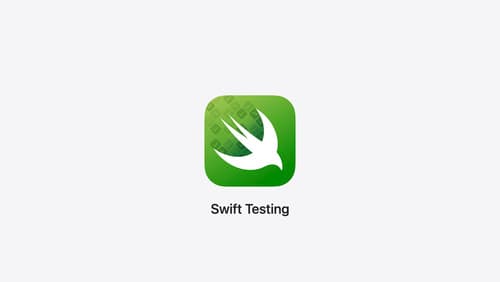swit testing
Asked on 2024-09-26
1 search
Swift Testing is a new testing framework introduced by Apple, designed to be expressive, easy to learn, and cross-platform. It is built from the ground up for Swift and is open source, hosted on GitHub. Swift Testing supports all Apple operating systems that support Swift concurrency, as well as Linux and Windows, providing a consistent testing experience across platforms.
Key features of Swift Testing include:
- Test Functions: Use the
@testattribute to denote test functions explicitly, supporting instance, static, or global functions. - Expectations: Use macros like
expectandrequireto evaluate Swift expressions, withrequirehalting tests upon failure. - Traits and Suites: Organize tests using traits and suites, with support for structs, actors, or classes.
- Parallelization: Tests run in process using Swift concurrency, allowing for safe parallel execution.
- Parameterized Testing: Easily parameterize tests to reuse logic across different values.
- Integration: Integrated into major tools like Xcode 16 and Visual Studio Code, with support for Swift Package Manager.
Swift Testing is designed to improve the testing workflow by providing tools to write expressive tests, organize them effectively, and run them efficiently in parallel. It is a significant improvement over XCTest, offering better functional parity across platforms and a more modern approach to testing in Swift.
For more detailed information, you can refer to the session Meet Swift Testing (17:35) which discusses the relationship between Swift Testing and XCTest, and how to migrate tests.

Platforms State of the Union
Discover the newest advancements on Apple platforms.

Meet Swift Testing
Introducing Swift Testing: a new package for testing your code using Swift. Explore the building blocks of its powerful new API, discover how it can be applied in common testing workflows, and learn how it relates to XCTest and open source Swift.

Go further with Swift Testing
Learn how to write a sweet set of (test) suites using Swift Testing’s baked-in features. Discover how to take the building blocks further and use them to help expand tests to cover more scenarios, organize your tests across different suites, and optimize your tests to run in parallel.
